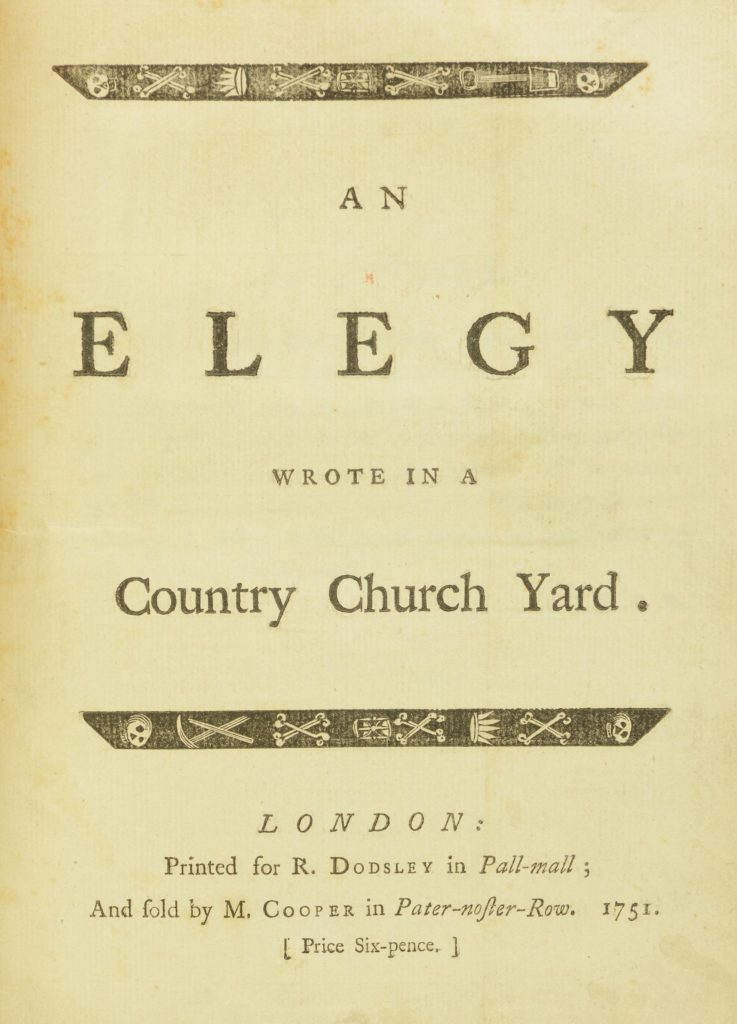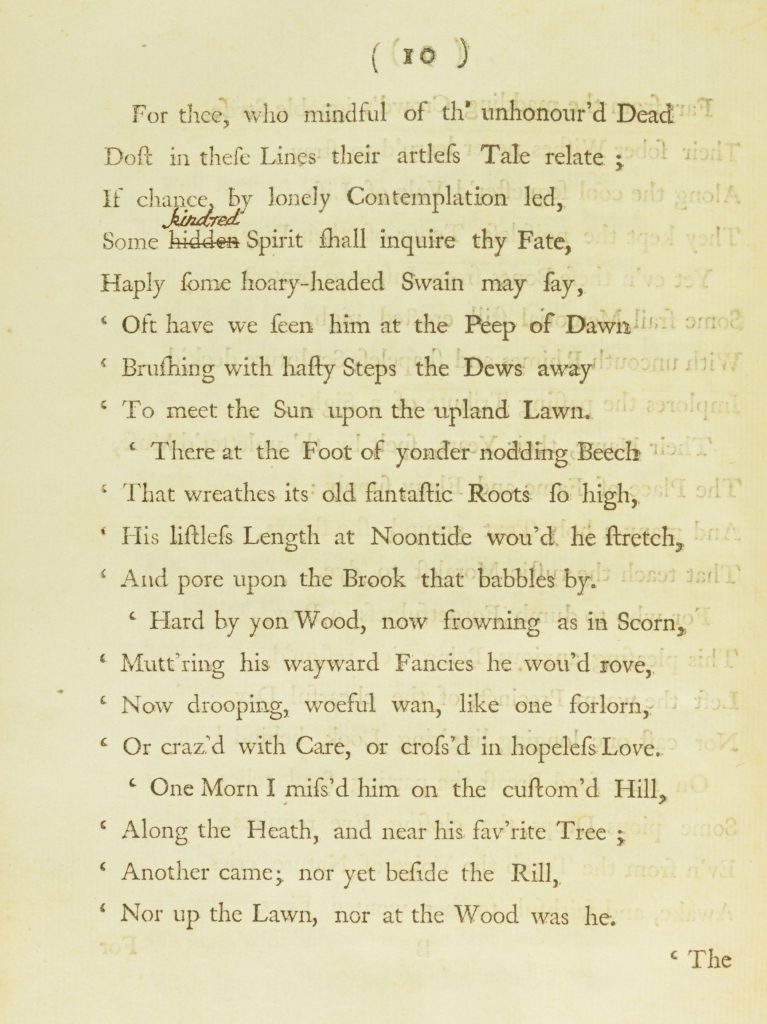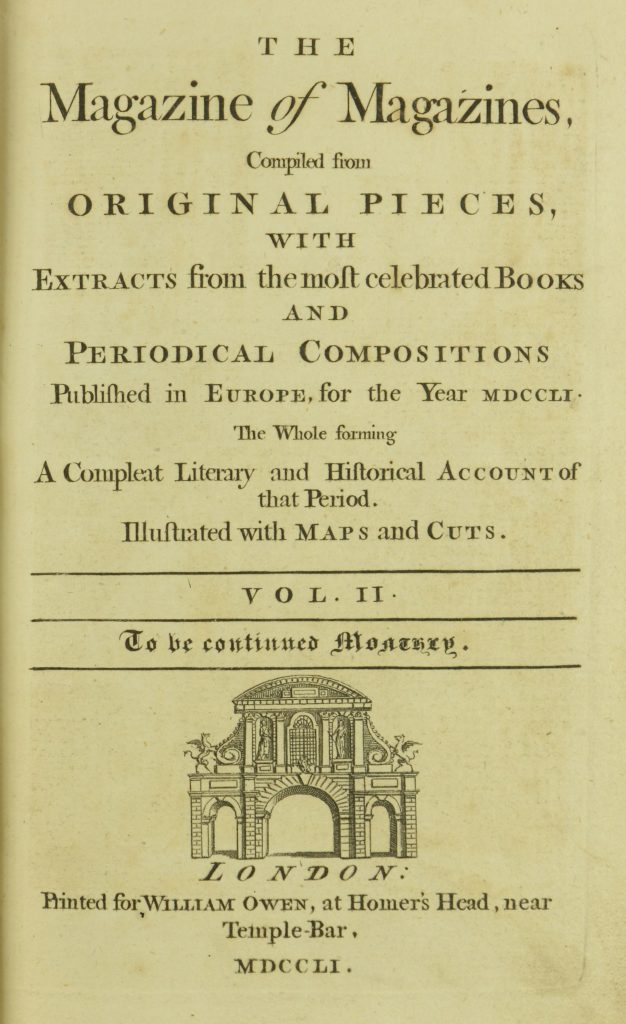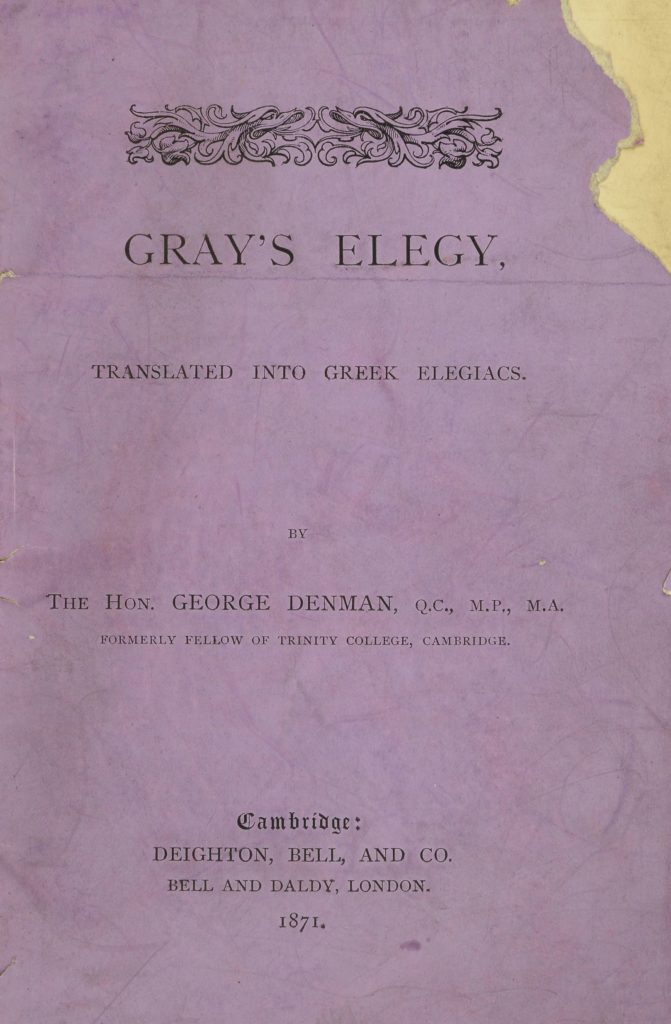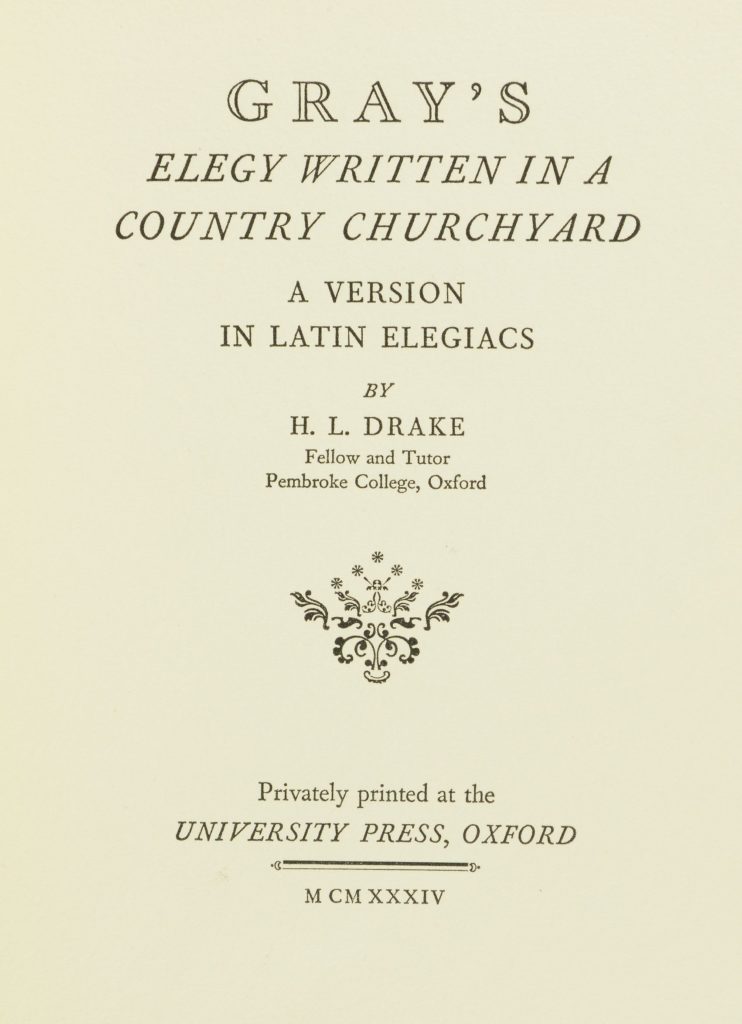After Gray left Eton in 1734 he had matriculated at Peterhouse College in Cambridge, where he immersed himself in wide ranging and largely independent studies. He left after four years without a degree to study law at the Inner Temple in London, but a few months later his school friend Horace Walpole invited him on a grand tour of France and Italy. This was cut short in 1741 after the two men quarrelled, and Gray returned to England where he would spend most of the rest of his life in Cambridge and at Stoke Poges, where his mother had retired after the death of his father.
During this time he also returned to writing poetry, in Latin and in English. After a few years he resumed his friendship with Walpole, with whom he shared his writing. On 12 June 1750, Gray enclosed in a letter to his friend a copy of a newly finished poem. Encouraged by Walpole, Gray circulated a few manuscript copies of the Elegy among their coterie, but without his name. Although his closest friends knew he was the author of the poem, Gray was actively trying to conceal his identity.
Before long, the verses ended up in the hands of some unscrupulous London printers, who to Gray’s dismay printed the poem without his authorisation. With support from Walpole, Gray immediately arranged for the London printer and poet Robert Dodsley to rush out an authorised but anonymous edition. Nevertheless, his name appeared in the unauthorised version published in the Magazine of Magazines the very next day, soon followed by yet another journal, The London Magazine, this time without Gray’s name and with the correct title – An Elegy written in a Country Church-yard.

John Giles Eccardt (1711-1779), Thomas Gray, engraving, 18th century [ECL FDA-E.2175-2015]
[I] am obliged to desire you would make Dodsley print it immediately (which may be done in less than a week’s time) from your copy, but without my name, in what form is most convenient for him, but in his best paper & character. He must correct the press himself, & print it without any interval between stanza’s […]; & the title must be, Elegy, wrote in a country church-yard. If he would add a line or two to say it came into his hands by accident, I should like it better.
Letter from Thomas Gray to Horace Walpole, 11/12 February 1751.
The official edition
This is a copy of the first authorised edition of the Elegy commissioned by Gray from the printer Robert Dodsley and donated to Eton College Library by the Etonian Nicholas Mann in 1754, only three years after its publication. As instructed, Dodsley added the following note to the reader.
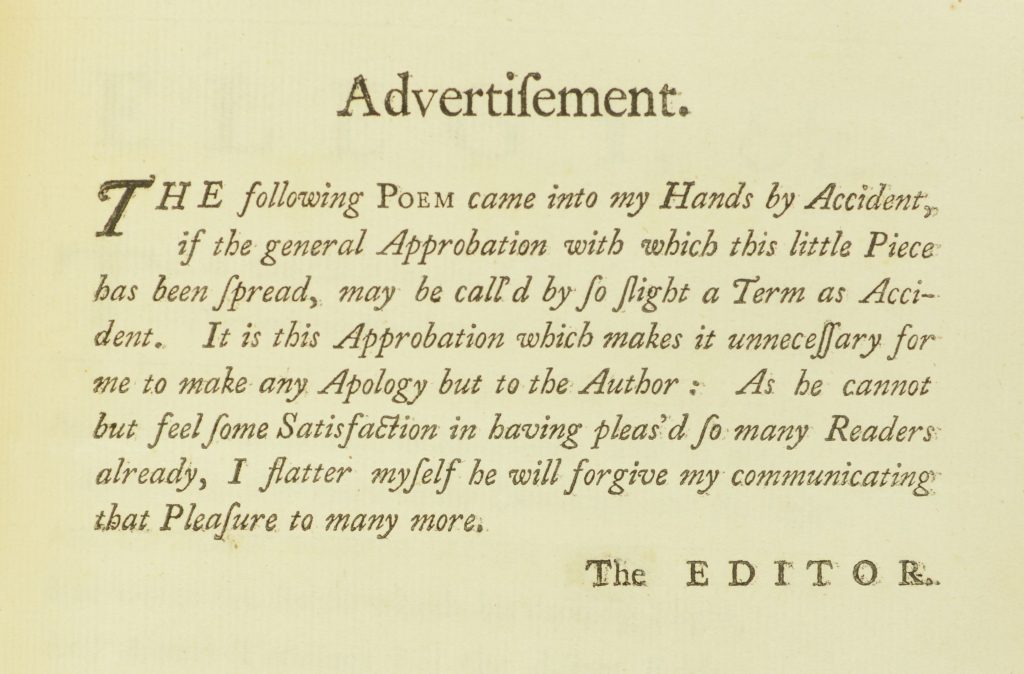
Two unauthorised editions
One day after the official publication, an unauthorised edition of the poem appeared in the February issue of the Magazine of Magazines, a monthly publication containing articles and extracts from major periodicals of the time together with summaries of current events, puzzles, correspondence, poetry selections, and news items. The unscrupulous printers not only published an unauthorised version of Gray’s Elegy, here wrongly titled Stanza’s, but also revealed his name: ‘the very ingenious Mr Gray, of Peter-house, Cambridge’.
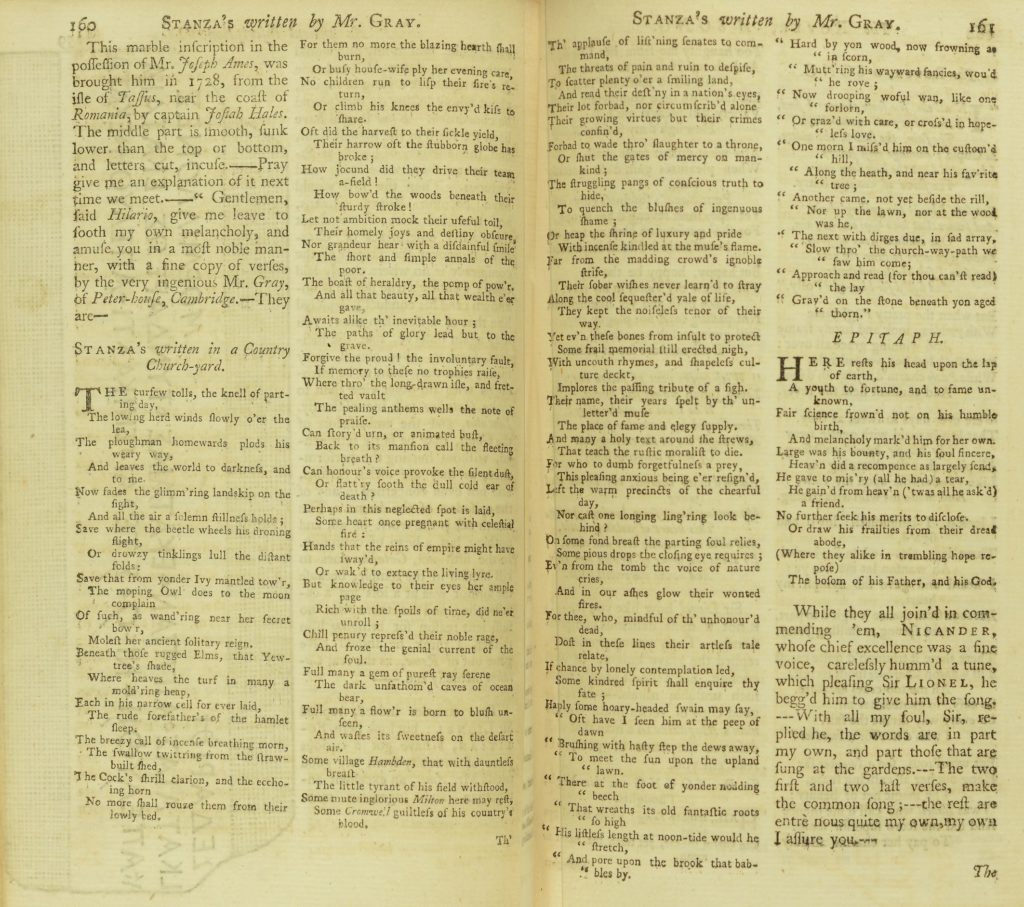
Soon after, in March 1751, other journals published the poem. This is one of the earliest ‘pirated’ editions, with the correct title and without Gray’s name. Although unauthorised, these pirated editions contributed to the wide circulation and rapid success of the Elegy.

Later translations
The success of the Elegy wasn’t ephemeral. Gray might have been flattered and pleased that, decades later, the poem inspired scholars who, like Gray, were skilled in composing verses and loved classics to make their own translations of the Elegy into Greek and Latin elegiacs. These booklets were published in Cambridge, London and Oxford respectively in 1871, 1878 and 1934.


